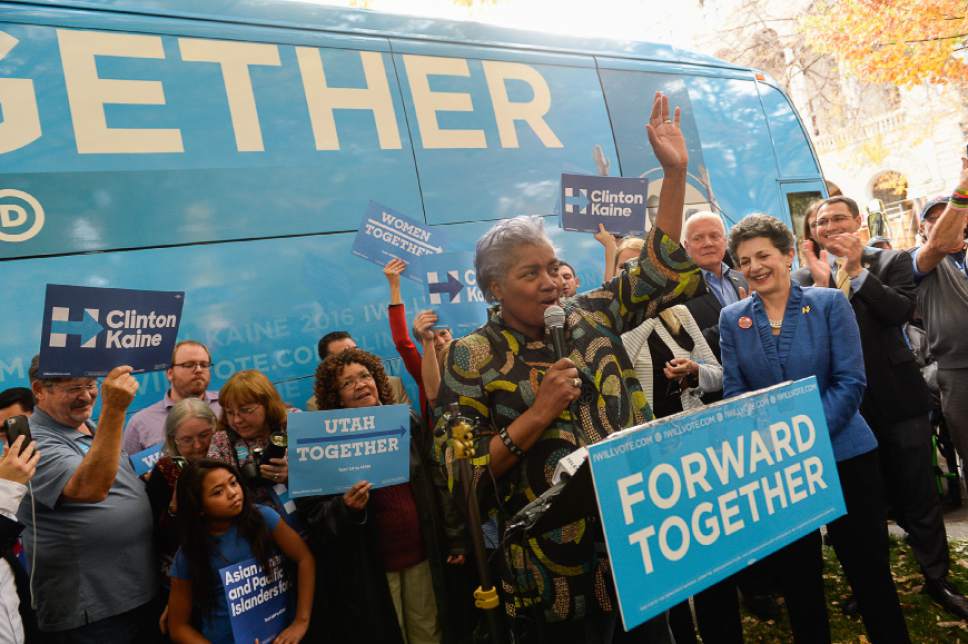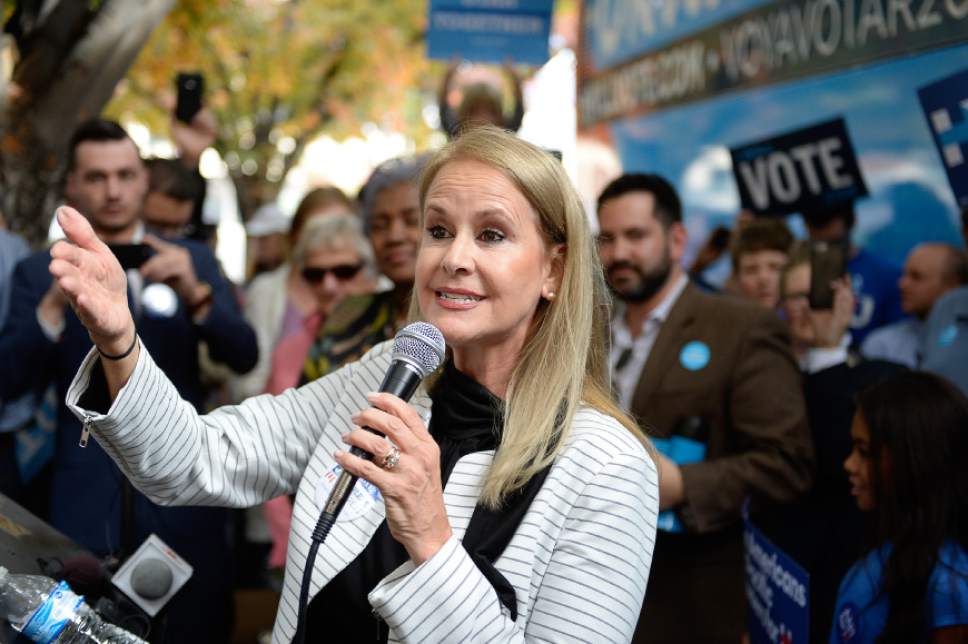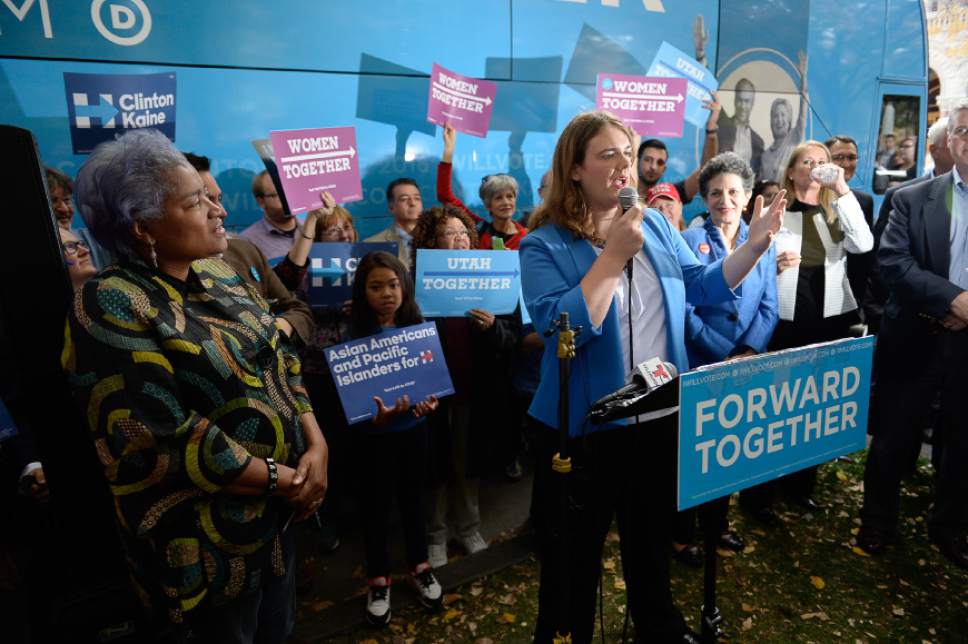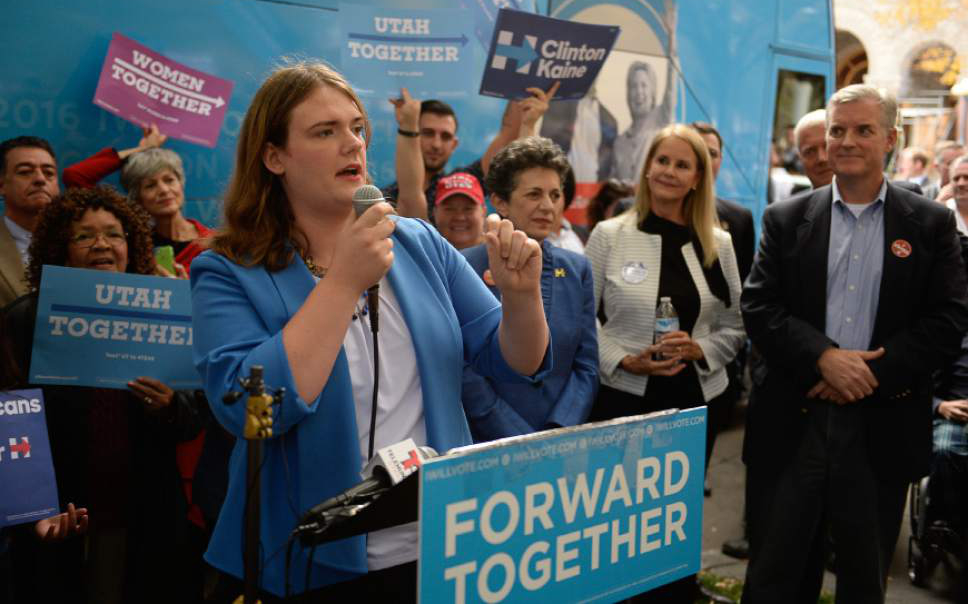This is an archived article that was published on sltrib.com in 2016, and information in the article may be outdated. It is provided only for personal research purposes and may not be reprinted.
As "Sesame Street" characters might sing, one of Utah's 29 counties is not like the others. In politics, Salt Lake County just doesn't seem to belong.
It looks like an island of Democratic blue — or at least purple — in a deeply red Republican state. Consider some findings from the latest vote counts from this year's general election:
• More than half of all of Utah's registered Democrats now live in Salt Lake County, while only one of every four Republicans in the state lives in the county. Utah's largest county has about a third of the state's population and a plurality of its active voters — 44 percent — are unaffiliated.
• All Democrats in the Legislature now will come from Salt Lake County after the party appears to have lost the only seat it held elsewhere. (Republican Christine Watkins is leading Rep. Brad King, D-Price, in House District 69.)
• Hillary Clinton won Salt Lake County by 41.5 percent to Donald Trump's 32.6 percent. In contrast, Trump won statewide by 45.4 percent to 27.8 percent. (The only other county Clinton won was Summit.)
• Democrat Charlene Albarran beat U.S. Rep. Chris Stewart by a 63 percent to 34 percent margin in the Salt Lake County portion of the 2nd Congressional District, which includes all of Salt Lake City. But he trounced her elsewhere and won by a lopsided 61 percent to 34 percent.
• Democrat Misty Snow, a grocery store clerk running with little money, still managed to win 41 percent of the vote in Salt Lake County against U.S. Sen. Mike Lee's 54 percent. Statewide, Snow, who made history as the first transgender Senate nominee from a major party, captured only 27 percent.
Democrats also hold mayoral seats in Salt Lake City (a post that is officially nonpartisan) and Salt Lake County.
Despite all that, Republicans still hold plenty of power in the county.
The GOP is on track to hold a one-seat majority for Utah House districts within the county, and a 6-5 edge of the county's state Senate seats.
The GOP also maintains a one-seat majority of the County Council, as Republican incumbent Richard Snelgrove fended off a spirited challenge from Democrat Catherine Kanter, who held the initial election-night lead. And Republican U.S. Rep. Mia Love bested Democrat Doug Owens both in Salt Lake County (by a 50-45 margin) and their overall district (54-42).
"It's really a 50-50 county," said Utah Democratic Party Chairman Peter Corroon, adding it may seem like a Democratic county only because the rest of the state is so Republican red.
Utah Republican Party Chairman James Evans agrees.
"It is certainly the swing county in the state," he said. Winning "usually comes down most of the time to the candidates and how hard they work."
The two party leaders also generally agree on why Salt Lake County is sort of the Fort Apache, or last real stronghold, of the Utah Democratic Party in the state — although Corroon says the party has some smaller enclaves in Summit and Grand counties.
In Utah, "The urban area is Democratic, the suburban area is a mix and the rural is very Republican," Corroon said. "You can see that in almost any urban area and state."
That is the case in Salt Lake County, where Democrats are strongest in urban Salt Lake City — plus adjacent areas such as West Valley City and Millcreek. Republicans hold most of their power in suburban areas in the southern stretches of the county.
The county's urban areas produce some of the state's most liberal officeholders — such as Sen. Jim Dabakis, D-Salt Lake City, and Salt Lake City Mayor Jackie Biskupski — and south-valley suburban areas elect some of the state's most conservative, such as Rep. Ken Ivory, R-West Jordan, and Sen. Howard Stephenson, R-Draper.
"Democrats tend to be better on the issues that people face" in urban areas, said Corroon, such as "air quality, health care and social-service needs. They tend to be more important there because that's where the majority of the homeless and others needing services live."
Evans agrees that Democrats tend to cluster in urban areas, but says the reason is a mystery. "It's a compelling question. I think it would take some sociologists" to figure out why "Democrats are drawn to urban areas."
While the county now is split between Democrats and Republicans, the party bosses have very different views of its political future.
Corroon argues Democrats will benefit from projections that minority groups in Salt Lake County in future years will become the majority. He notes that groups such as Latinos and Asians have voted overwhelmingly Democratic.
"The growth of minority populations — especially Latinos and Asians — will help the Democratic Party grow," he said.
Evans disagrees. "Republicans appeal to people on the issues and [don't] try to put them in boxes based on race. If they support liberty, freedom and smaller government, they will be Republican."
He added, "It's all about the issues. That's one of the reasons Democrats lost the presidential race. Trump got more Hispanic votes than Mitt Romney, so we're going in the right direction."
The two also have clashing views of what the Trump presidency will mean for the parties going forward.
"The Trump win is going to provide a resurgence within the Republican Party," Evans said, "because, whether you supported Trump or not, you have to admire how he put a coalition together of people from all walks of life," and promises to focus on performance instead of ideology.
Corroon said the aftermath of Trump's rise is a "big question mark. We don't know what the Trump presidency is going to look like. Based on his early picks, he's sending mixed messages about whether he will go with establishment Republicans or not."
He added, "We're still trying to evaluate what the next steps are. The Democratic Party needs to do a better job with the average worker to let them know we're looking for economic equality for all. We believe the Republican Party has had a large hand in creating the widening gap between the rich and others."
ldavidson@sltrib.com Salt Lake County's BLUE hue
Presidential vote • Democrat Hillary Clinton won Salt Lake County by 41.5 percent to Donald Trump's 32.6 percent (compared to a 45 percent to 28 percent Trump win statewide).
Voters • More than half of all active registered Democrats in the state live in Salt Lake County.
Legislature • Democrats and Republicans are close to even in legislative seats in Salt Lake County, while Democrats now hold no seats outside the county.
Congress • Congressional races are more competitive in portions of those districts within Salt Lake County than outside of it.
County offices • The top two local elective offices in the county: Mayors of Salt Lake County and the capital city are both Democrats (although Salt Lake City's post is officially nonpartisan).









